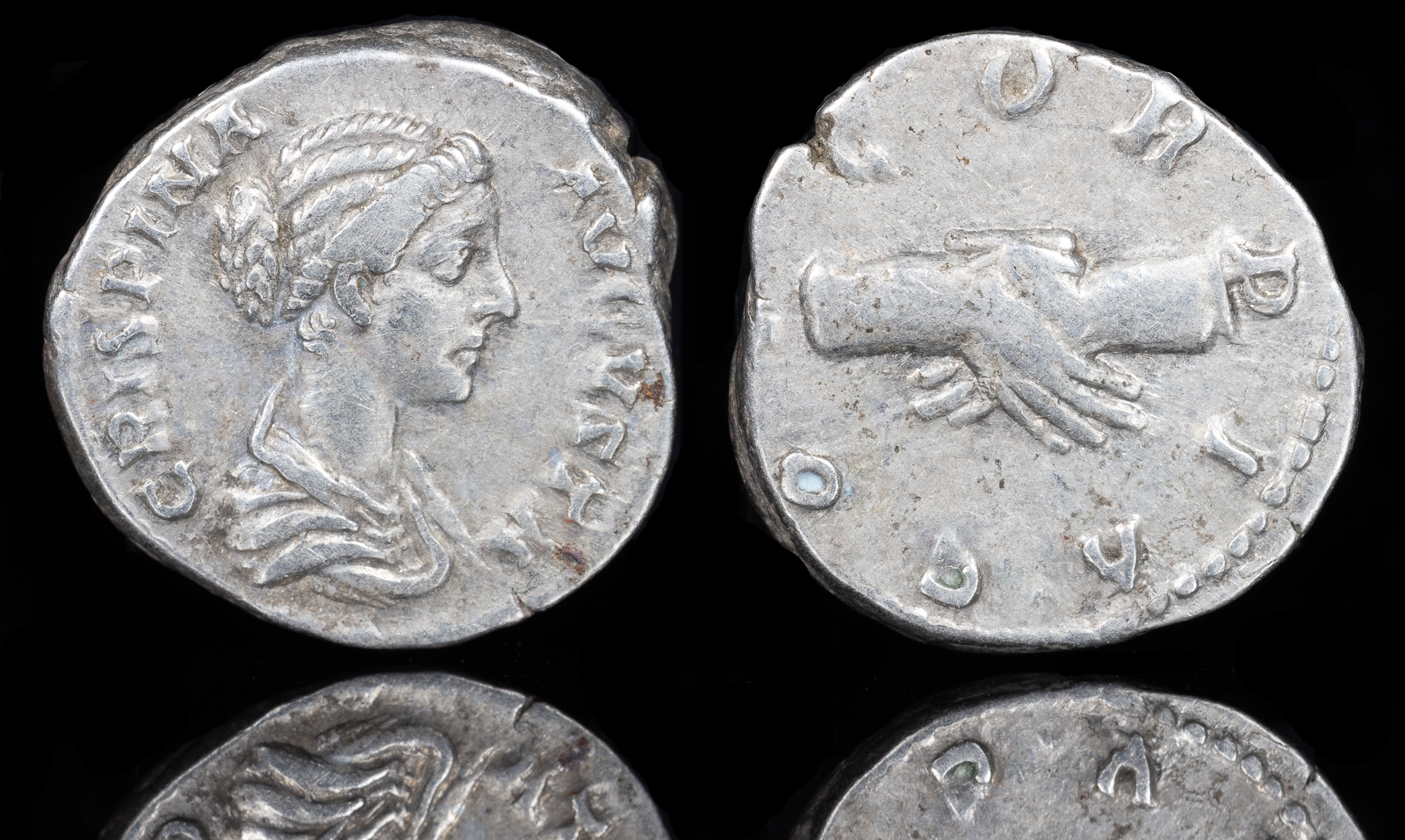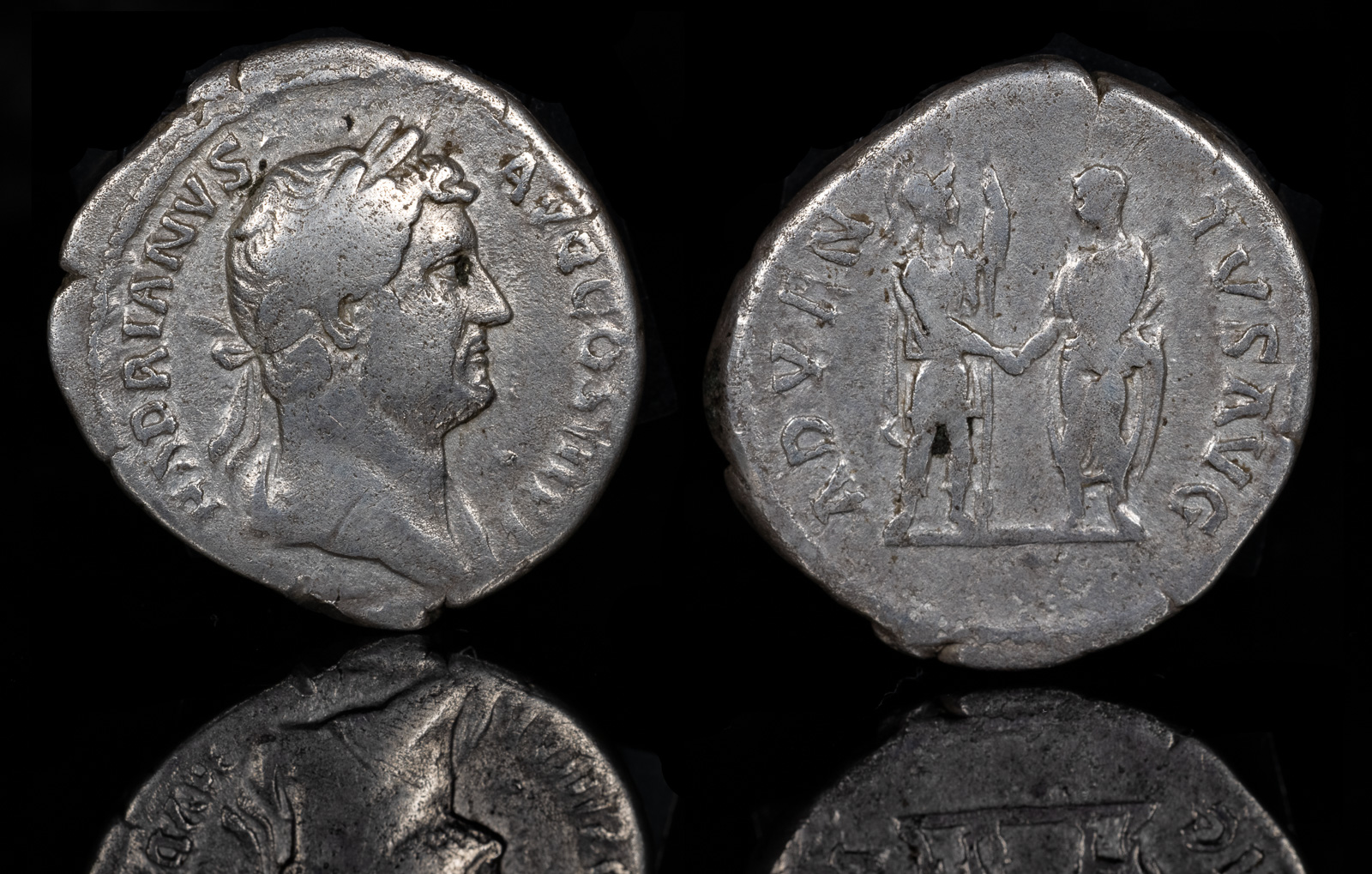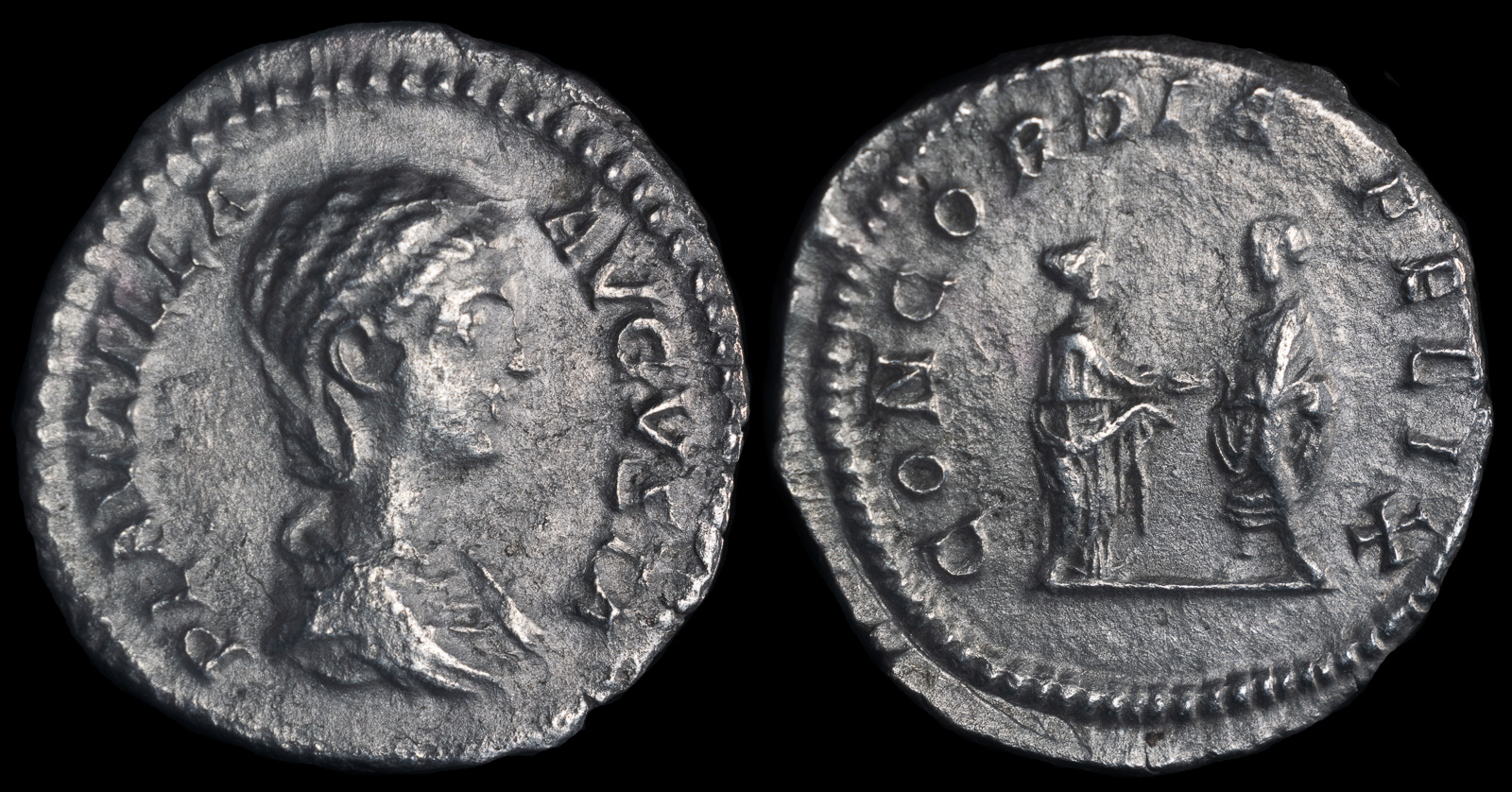Clasped Hands
View All Tags
One of the primary uses of clasped hands on Roman coins was to represent political unity or reconciliation. This imagery often appeared during times of transition or political consolidation, such as the formation of alliances between powerful figures or the establishment of peace treaties. For instance, coins minted during the reign of Augustus might depict clasped hands alongside other symbols of stability, such as an olive branch or cornucopia, reinforcing his role as a unifier of the Roman world after decades of civil war.
The clasped hands motif also had strong personal and ceremonial connotations, particularly in relation to marriage and familial bonds. Coins issued to celebrate imperial marriages often included this imagery, symbolizing the union of two prominent families or the strengthening of dynastic ties. This visual shorthand highlighted the importance of such unions in maintaining the continuity and legitimacy of Roman rule.
In addition to its political and familial meanings, the motif could carry religious and cultural significance. The act of clasping hands was associated with solemn oaths and sacred agreements, underscoring the trust and commitment between parties. When depicted on coins, it served as a reminder of the moral and social values that upheld the Roman state, such as loyalty, fidelity, and the sanctity of contracts.
The clasped hands motif was often accompanied by inscriptions or additional symbols that clarified its specific context. For example, a coin might pair clasped hands with the legend CONCORDIA (harmony) to emphasize the theme of unity. Other coins might include representations of deities like Concordia or Fides, reinforcing the divine sanction of the depicted alliance or agreement.

Crispina 177-182
AR Denarius 3.93g, 18mm
Bust of Crispina right CRISPINA AVGVSTA
Clasped hands CONCORDIA
RSC 8
Ex Aegean Numismatics

Hadrian
Rome 117-138 CE
AR Denarius 18mm, 3,13g
Obv: HADRIANVS AVG COS III P P. Head of Hadrian, laureate, right.
Rev: ADVENTVS AVG. Roma standing right, holding spear and clasping hands with Hadrian, standing left, holding scroll.
Ref: RIC 1983; Cohen 84; BMC 583

Plautilla, Augusta
Rome 202 CE
AR Denarius 18mm, 2,24g
PLAVTILLA AVGVSTA Draped bust of Plautilla to right.
Rev. CONCORDIA FELIX Plautilla, on the left, and Caracalla, togate and on the right, standing facing each other and clasping their right hands.
BMC 418. Cohen 12. RIC 365a